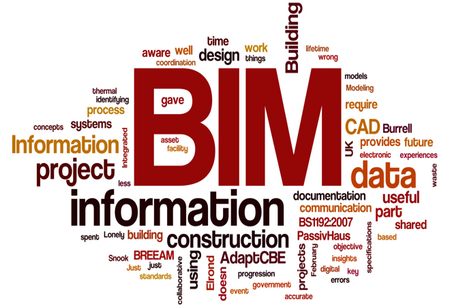The changing landscape of BIM Consultants
 BIM (Building Information Modelling) Consultants is a growing market segment in India with many experts predicting that the market will be valued at 10.7 billion US dollars by 2026. For those who are not aware about what a BIM consultant does, they help businesses by offering process-based solutions in order to ensure project co-ordination. The expertise of top-notch BIM consultants is fetching a premium in the market owing to how indispensable BIM consultancy is becoming in the architecture, engineering as well as construction industry.
BIM (Building Information Modelling) Consultants is a growing market segment in India with many experts predicting that the market will be valued at 10.7 billion US dollars by 2026. For those who are not aware about what a BIM consultant does, they help businesses by offering process-based solutions in order to ensure project co-ordination. The expertise of top-notch BIM consultants is fetching a premium in the market owing to how indispensable BIM consultancy is becoming in the architecture, engineering as well as construction industry.
When compared to many western countries, BIM consultancy in India is still going through its initial days with businesses starting to be more aware about their importance going forward. With that said, the BIM consulting services has evolved over the years and is starting to garner the appeal it deserves across the country. The rapid penetration of BIM technology is considered to be a welcoming change by many industry experts and many believe that, in the coming years, BIM consulting services will play a crucial role in shaping the Indian construction industry as a whole.
While, as mentioned before, the BIM consultancy market is still finding its feet in India, many businesses have identified its potential and has started offering BIM consultancy services. This influx in the number of BIM consultants will not only play a crucial role in bringing awareness towards the importance of BIM consultancy but it will also make BIM consultancy services much more accessible for different businesses both big and small, as well as, new and old.
With businesses especially in the construction industry starting fresh in the post-pandemic market, it is a great opportunity for them to know more about BIM consultancy, the new opportunities it opens for construction, architecture and engineering business, as well as, its overall evolution in the market from fellow industry experts and pioneers.
Talking about what BIM is and how it works, Soumya Das who holds the office of Director at Rudrabhishek Infosystem says “It is a software driven interface which provides the project delivery team with a 3D virtual visualization of the look and feel of the building to be constructed. The traditional building design was largely reliant on two dimensional technical drawings (plans, elevations, sections, and others). Building information modeling extends this beyond 3D, augmenting the three primary spatial dimensions (width, height, and depth), including time as the fourth dimension (4D), cost as the fifth (5D), estimation as the sixth (6D) and facility management as seventh (7D)”.
While sharing his thoughts on how the nation should use disruptive technologies to its benefit, Raj Kalady, Managing Director, Project Management Institute (India) adds “We see that innovators are leveraging these technologies to their advantage to encourage greater efficiency and automation, increase productivity, promote the development of better products & services, automate mundane tasks, advance innovation, and drive better decision making”.
Giving his insights on the BIM consultancy market landscape in the country, Sawan Sakale who is the Founder of Global Prism Infratech says “There is immense potential for this industry in India and we are aiming to help our clients to optimize their operations by reducing the time needed for construction and by minimizing wastage. Also, we see that in India, there is lot of wastage and less automated processes which is adversely impacting the growth of the entire industry”.
Sharing his opinion on the Indian BIM consultancy market and its position when viewed from a global perspective, Pranav Suthar who is the Founder of S Plus Associates states “Currently, in India, the BIM industry is still in its infancy period but in regions in the middle east and Europe, as well as, in countries like Australia and the US, even the government projects utilize the BIM technology now. With that said, I believe that in India also, this will become the case in the future”.
Adding more about how BIM technology can benefit the nation, Arun Dutt who works as an International Business Consultant with TurnBIM Engineering services says “BIM as a new information technology and it provides an intelligent digital representation of buildings to support diverse activities and it brings about a wide range of benefits throughout the life cycle of projects. It is surely transforming permanently, the way in which construction and restoration projects are done. This transformation means better buildings in more and better places, as well as a more profitable industry”.
From all this, one can grasp the upsides of BIM technology and the growing importance of top-notch BIM consultants in the country owing to the fact that they can become catalysts of the change in the nation building process.




